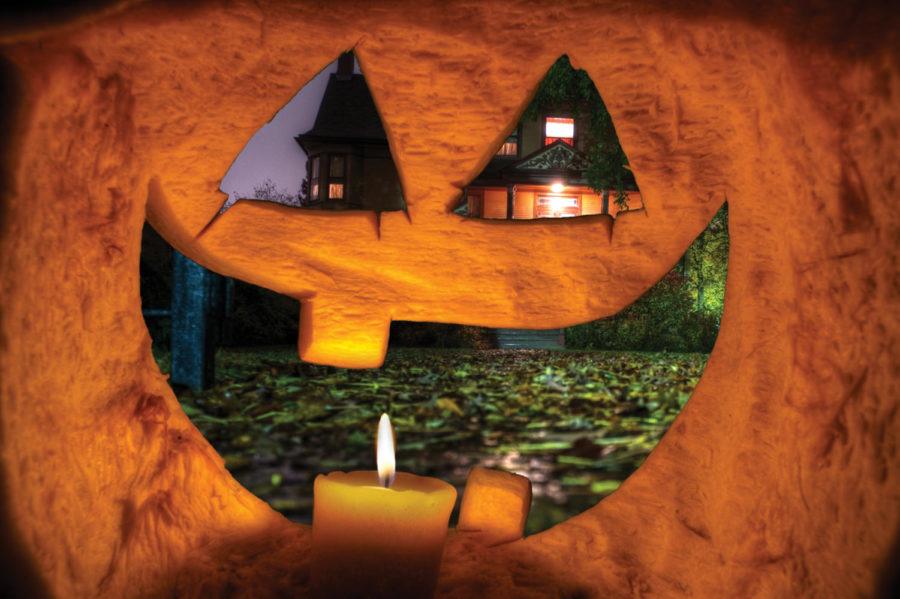Henry: Halloween has lost its magic
Photo courtesy of Flickr/Justin Kern
Opinion: Henry 10/31
October 31, 2012
“All Hallows’ Eve has turned into a night of frolic where children wear costumes and run amok!”
This is a line from one of my favorite movies, “Hocus Pocus,” and I believe that it accurately describes what Halloween has become. Few know that Halloween, or All Hallows’ Eve, has a rich historical and cultural background. This holiday has lost its history to the mainstream world of overpriced candy and costumes.
All Hallows’ Eve is the day before All Saints’ Day in the Christian calendar. Christian worshippers would use All Hallows’ Eve to fast and pray prior to the feast held on All Saints’ Day.
Today’s American Halloween traditions have supposedly come from a Celtic festival called Samhain (pronounced sow-in) that took place Ireland, Wales, and Scotland. Samhain translates to “Summer’s End”.
Samhain had a heavy emphasis on all things supernatural. Christian missionaries identified supernatural deities associated with Samhain as evil and began to associate them with the devil. Anybody who believed in Samhain were forced to go into hiding and were labeled as witches.
After the fall of Samhain, All Saints’ Day was assigned to November 1st and honored every Christian saint. The All Saints’ Day feast was intended to mask the history of Samhain to make Christianity more prominent.
Traditions established by Samhain never completely died out. Samhain, now fondly referred to as Halloween, is the time of year where physical and supernatural worlds are closest, and paranormal things can happen. Celtic people would appease the spirits by laying out gifts of food and drink.
Today’s tradition of dressing in costume was once referred to as mumming, where people would dress like the spirits and perform in exchange for food and drink.
Similar cultures celebrate All Hallows’ Eve in different ways. El Dia de los Muertos, or the Day of the Dead, is a Mexican holiday which celebrates deceased loved ones. Families create altars for their loved ones decorated with food and decorations such as skulls, candles and incense. Mexicans believe the spirits of the dead visit their families Oct. 31 to Nov. 2. Day of the Dead is a holiday where Mexicans can turn their fear of death into celebration and joy.
This Pagan holiday has turned into the second largestcommercial holiday in the United States.
As you can see, many of these cultural traditions have carried over into today. However, their historical significance has been lost. The goal on Halloween if you’re under the age of 14 is to get as much candy as possible and watch it last until Easter. If you’re over the age of 16 and female, the goal seems to be to wear as little clothing as possible for the most amount of money.
I get confused when I try to understand why all of a sudden it became the norm to spend 40 plus dollars on scraps of clothing you’re really only going to wear once. Sure, I’ve fallen prey to this custom, and I complain about it every year.
I’d like to blame “Mean Girls,” when Lindsay Lohan narrates that “Halloween is the one night of the year when girls can dress like total sluts, and nobody can say anything about it.”
Every year, without fail, girls (including myself) complain and complain they have no idea what to dress up as, and that it’s so expensive. So I ask: Why does it have to be? Can’t you go to Hobby Lobby and spend $15 versus going to the Halloween store and spending 60?
I’d love nothing more than to sit in my sweatpants with my favorite Halloween candy and my favorite Halloween movies. But due to my extreme fear of missing out, I’ve wasted money on a costume I’ll never see after Halloween.
I wish we could remember how all of our favorite holidays originated from rich history and culture.
Believe it or not, it’s possible to celebrate holidays without spending ludicrous amounts of money.

















